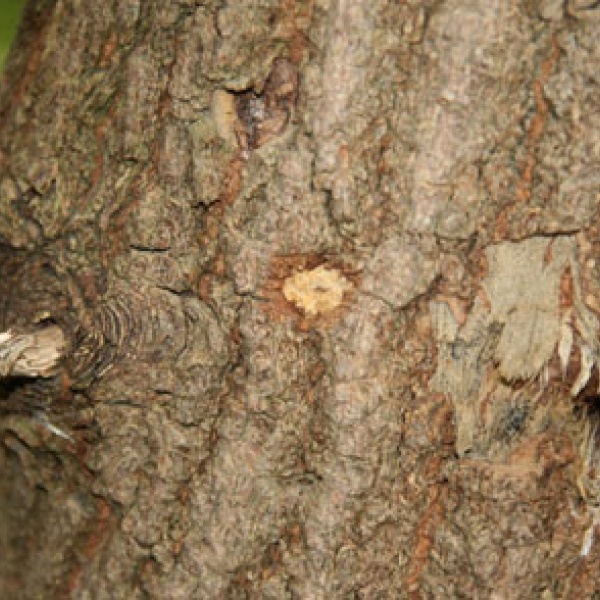The Asian long-horned beetle (Anoplophora glabripennis) is a highly destructive wood-boring pest of maples and other hardwood trees including poplar, birch and willow. It can spread through transport of infested wood products including firewood. The larvae of this beetle can kill trees directly, by damaging the tree, or indirectly, by enabling other pests and diseases to affect the tree. It feeds on and damages a wide variety of hardwood trees, including many important species found in Canada
It was eradicated from the cities of Mississauga and Toronto in the province of Ontario in 2020.
What you can do
- Don't move firewood
- Inspect wood packaging material for signs of infestation
- If you see the Asian long-horned beetle or signs of infestation on your trees, report it to the Canadian Food Inspection Agency (CFIA) immediately
Report Asian longhorned beetle sighting
What to look for
Susceptible trees
- Most likely to be affected: Maple (Acer spp.)
- Occasionally affected: Birch (Betula spp.), poplar (Populus spp.), willow (Salix spp.)
- Rarely affected: Elm (Ulmus spp.)
- No record of having issues with this pest: Horsechestnut (Aesculus spp.), sycamore or London plane tree (Platanus spp.), katsura (Cercidiphyllum spp.), moutain ash (Sorbus spp.), silk tree (Albizia spp.), hackberry (Celtis spp.), goldenrain tree (Koelreuteria spp.)
What we are doing
The CFIA is responsible for the administration and enforcement of federal acts and regulations, including the Plant Protection Act. We work with our partners on surveying, enforcement, and communications to the public about invasive insects.
The Asian longhorned beetle was discovered in the cities of Mississauga and Toronto in August 2013. We carried out surveys and removed infested trees in partnership with local and provincial leaders, as well as the Canadian Forestry Service. After 5 years of surveys with no detection, it was considered eradicated. The Asian longhorned beetle Infested Place Order has been repealed effective June 9, 2020. The movement of firewood and host tree materials is no longer restricted.
- Asian longhorned beetle declared eradicated in the cities of Mississauga and Toronto (news release, 2020-06-25)
- Canadian wood packaging import requirements
- Asian Long-horned Beetle Compensation Regulations
- Policy directives:
- D-11-05: Phytosanitary Requirements for Non-Manufactured and Non-Propagative Wood Products to Prevent the Introduction from the Continental United States and Spread Within Canada of the Asian Longhorned Beetle, Anoplophora glabripennis (Motschulsky)
- D-11-01: Phytosanitary Requirements for Plants for Planting and Fresh Branches to Prevent the Entry and Spread of Anoplophora spp.
- D-08-04: Plant protection import requirements for plants and plant parts for planting
- D-02-12: Phytosanitary import requirements for non-processed wood and other wooden products, bamboo and bamboo products, originating from all areas other than the continental United States
- D-01-12: Phytosanitary Requirements for the Importation and Domestic Movement of Firewood
- D-98-08: Entry Requirements for Wood Packaging Material into Canada








